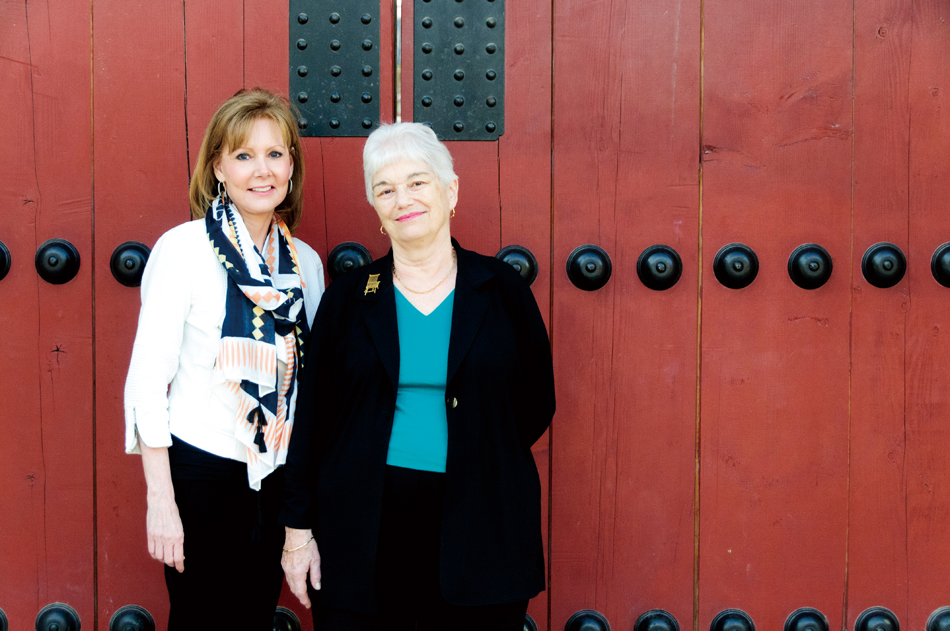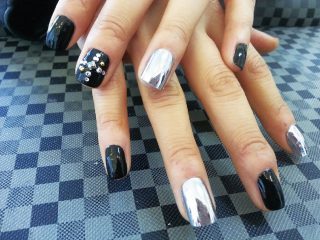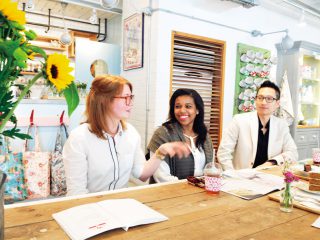[box_light] Opening the Door to an Undiscovered World
‘100 Thimbles in a Box’ authors Debbi Kent and Joan Suwalsky introduce readers to the charms of Korean handicrafts [/box_light]
Written by Robert Koehler
For American writers Debbi Kent and Joan Suwalsky, the decision to put together “100 Thimbles in a Box: The Spirit and Beauty of Korean Handicrafts” (2014, Seoul Selection) was a natural outgrowth of what the two had been doing for years, namely, teaching classes about Korean art and handicrafts to adoptive children and parents. “People kept asking us to do a website with the information there,” says Joan. “We thought that a website would be too time-consuming since we’d have to keep changing it up, so we wondered, ‘Why not write a book?’”
And what a book they have produced. The 168-page soft cover volume is an expertly written and photographed introduction to the under-appreciated world Korean handicrafts. And through the art, Debbi and Joan provide readers a glimpse of the Korean soul.
Educating Adoptees and the Public at Large
As the mothers of two adopted daughters and an adopted daughter and son, respectively, Debbi and Joan were keen to help their children learn about the rich cultural heritage of the nation of their birth. Joan says, “We believe that it helps them to integrate their Korean and American—or Australian or Scandinavian—characteristics and sensibilities. Each internationally adopted child has to shape an individual identity, weaving together his or her Asian origins and later non-Asian experiences.”
Beyond this, however, the two hoped to promote a better appreciation for Korean handicrafts, which have long taken a back seat to Chinese and Japanese handicrafts internationally. Debbi says, “We hope we have created something that will generate the same kind of excitement we felt when we first looked into the shop windows in Insa-dong nearly 20 years ago and said to each other, “Oh my gosh, look at this stuff! It’s beautiful!” While they don’t expect people to sit down and read their work cover-to-cover, they do hope the photos—vivid and beautiful as they are—will inspire a sense of curiosity that will get them reading—and understanding. Debbi, who took most of the photos during her 18 years of travels to Korea, explains, “[E]ven if they never read a word, even if they just look at the pictures, we hope that they will have the same reaction as a friend of ours who knows very little about Korea. She looked through the book recently and when she was done echoed our words from that first trip to Insa-dong. ‘Wow. I had no idea. This stuff is really beautiful!’”
Learning Can be Difficult
One of the biggest challenges in putting together “100 Thimbles in a Box” was simply learning how to write a book. Book production is never easy, even when—or especially when—you’ve got so much good material. “We started by sketching out a plan for the contents,” says Joan. “We had to choose which handicrafts to include and decided early on to be selfish and concentrate only on ones we loved. Unfortunately, that didn’t help us eliminate many.” Finding images they did not have and obtaining permission to use them proved a challenge, too.
Now that the book is out, they’ve got a new hurdle over which to jump. “[W]e’re faced with having to learn all about marketing a book,” says Joan. “Life is full of fun challenges!”
Korean Handicrafts Getting Their Due
It’s a sad reality that many aspects of Korean culture—including its artistic heritage—are not as well known in the United States, a fact that may seem odd, says Joan, given the important role the United States has played in Korean affairs over the last century. The travails of Korea’s 20th century history certainly didn’t help matters, but things are getting better. Says Joan, “[T]hings are changing, and we hope our book is part of the new wave of information.”
To Debbi, Korean handicrafts reflect the beauty of the mean. “I found Chinese art and craft overall to be the most ornate, most colorful, and often most detailed. I found Japanese handicrafts, on the other hand, to be simpler and more serene, with quieter colors,” she says. “Korean art and crafts fall somewhere in between. They have not only an elegant simplicity, but a lively spirit as well, and combine the elements of design, proportion color and shape in a way that is distinctly Korean.” Joan adds, “Korean handicrafts have a spontaneity, humor, and familiarity about them that make them very approachable. They also have an aesthetic that is simple, balanced and natural.”
[box_info]“100 Thimbles in a Box” can be purchased at the Seoul Selection Bookshop and all major Korean bookstores. Visit seoulselection.com for more information.[/box_info]




